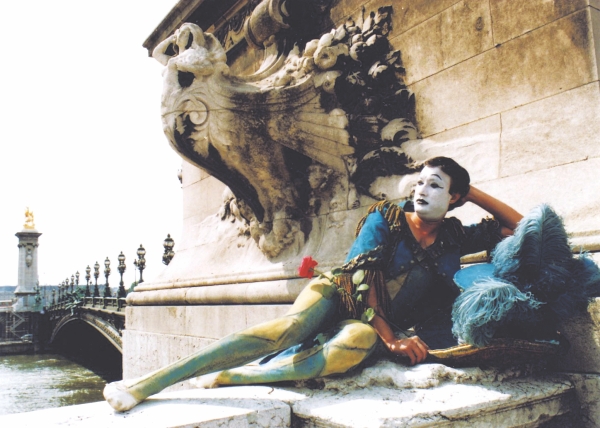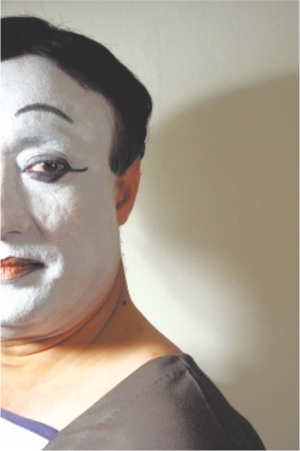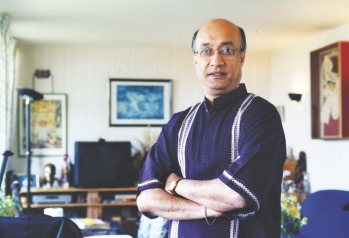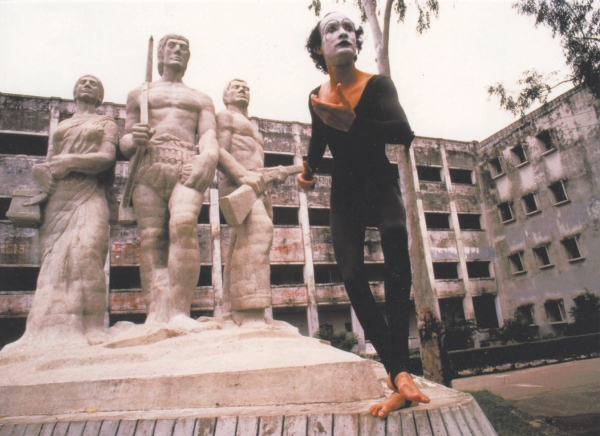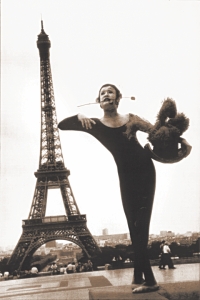| Home - Back Issues - The Team - Contact Us |
 |
| Volume 11 |Issue 04| January 27, 2012 | |
|
|
Profile
The Art of Silence Anika Hossain Expression through gestures is perhaps the earliest form of human interaction. Before the development of voice and language, people used movement and signs to communicate, evidence of which can be seen in ancient pictographic writings of the Egyptians, Aztecs and the Hebrews. These gestures can also be found in ancient religious ceremonies through dance. As the use of vocal chords came into being, these silent gestures were no longer used as the primary means of communication, but they did not become completely obsolete. They evolved into a form of art, used to entertain thousands, and came to be known as mime.
In its early years, mime was a series of street performances and shows in Greek and Roman arenas, performed by actors in their signature skin-tight black outfits and painted white faces. In modern times, it is being performed in theatres and churches, all over the world by artists, with and without their faces painted in the traditional white make-up. While contemporary mimes still refrain from speaking, they occasionally use vocal sounds in their performances. This worldwide popularity has made mime an art that many Bangladeshis are familiar with. Most view it as a foreign concept, owned by Europeans and Americans, but one little Bangladeshi boy, in the early sixties, thought differently. Born in 1954 to a family of artistes, Partha Pratim Majumder enjoyed a very unique childhood. Most of his early years were spent in his ancestral home, the biggest Thakurbari (aristocratic house) in Pabna, situated in a small locality known as Kalachandpara, a hub of cultural activity. “My father was a press photographer, and he taught us to learn and appreciate various different forms of art,” says Majumder. “There were festivals and cultural shows in Kalachandpara all year round, some of them held in my own backyard. I spent my days watching jatra (folk street plays), natok (drama), poetry recitals, dancing, singing, films, lathi khela (stick fights) and many religious festivals both Hindu and Muslim. I remember when I watched the lathi khela I paid close attention to the expressions and movements of the participants and was fascinated by what I saw,” recollects Majumder. Majumder was drawn to the glamorous performances of these actors in glittering costumes, transforming themselves into mythological characters. He wanted to belong to their magical world. With a boldness rarely seen in boys his age, Majumder draped himself in his mother's saris to play act with his friends. In 1966, Majumder moved to Chandernagar, a French colony just 30 kilometers away from Kolkata, to live with his paternal aunt. “It was here that I encountered the first mime artist I had ever laid eyes on,” says Majumder, “I had no idea that a craft called mime even existed until then.”
This artist was none other than Jogesh Dutta, well known for his reclusive lifestyle. Majumder watched in amazement as his neighbour performed skits without making a single sound. “At first, I thought he was suffering from a mental condition, but after a performance I saw in Kolkata, I realised that Jogesh Dutta was a self taught mime artist,” says Majumder. “I was mesmerised by the way he told entire stories through expression and gestures and I asked him to teach me, which he agreed to do after much persuasion.” When he returned to Dhaka, Majumder pursued a career in music and became quite well known. Adopted by Ustad Barin Majumder and his wife, eminent classical singers of their time, he honed his skills under their tutelage. But he soon realised that his true calling was one that mandated complete silence. “I had not given up mime, even in those days,” says Majumder, “I continued to practice and eventually landed a number of stints on BTV. I performed in a variety programme called Rangdhanu, I also performed in Apon Priyo, Jodi Kichhu Mone Na Koren which was the longest running show on television at the time and several others which helped me gain popularity.” Through these shows, Majumder discovered that his talent was greatly appreciated by the Bangladeshi audience. He proudly walked on the streets of Kalachandpara in his Lycra tights, painted face and red lips and was viewed with awe and admiration. “I did performances about people's lives. Their daily ordeals and pleasant experiences as well. I gained so much success that in 1979, I was asked to perform my first solo in Shilpakala Academy, where I was noticed by the French ambassador Loic Moreau.” Moreau knew talent when he saw it, and in 1981, the French government offered him a scholarship to enable him to receive professional training in mime, under the legendary maestro, Etienne Decroux. This was the first time this scholarship was granted to a student of mime. “My original style of performance had been pantomime, but under my 90-year-old teacher, I learned corporal mime which was his speciality.” Through Decroux, Majumder met another celebrated mime artist known as Marcel Marceau, who has transformed modern mime by taking it to unimaginable new heights. Impressed by the young Bangladeshi talent, Marceau offered him a place in his school for mimes, 'Ecole Internationale de Mimodrame de Paris-Marcel Marceau' the biggest and the best in the world. “It was a rare honour that I am still not sure I deserved,” says a modest Majumder. “Under Marceau, I learned different forms of mime like pantomime, corporal mime alongside which I had to take lessons in drama, sword fighting, ballet, stick fighting, modern dance acrobatics and theatrical acrobatics,” says Majumder. “I was his first Asian student, and I wanted to make him proud.”
During his three-year training period, Majumder practiced 16 to 18 hours daily. “It felt like every bone in my body would break at any time,” says Majumder, “There were many moments when I felt like I was ready to commit suicide, but I knew even then that it was all worth it.” After his time with Marceau, Majumder's career was unstoppable. He staged solo performances in England, Belgium, Germany, Spain, Italy and the USA. French, Canadian and American channels as well as BBC enthusiastically aired his shows. His talent was recognised worldwide and the mime artiste was showered with awards and accolades.
In 1987, Partha Pratim Majumder was bestowed the "Master of Mime" Award by the only mime academy of India “Jogesh Mime Academy.” The Journalist Association of Malaysia named him "Master of the World” later that year. In 2009, Majumder bagged the highest European honour for theatre, the “Moliere Award,” followed by the Munier Chowdhury Award. In 2010, he was granted the highest honour a Bangladeshi can receive in the form of the “Ekushey Padak.” But that was not enough for Majumder; he did not rest until he obtained the highest French honour ever to be bestowed upon a mime artiste-“Knight in the Order of Arts and Humanities.” His renowned persona and celebrity has not taken Majumder away from his roots, which is rare and delightful in an artist. Every year, he returns to his country to conduct workshops on mime and perform in various different districts all over Bangladesh. “I hope to establish a mime academy in Bangladesh someday. I believe mime can have so many different purposes,” says Majumder. “It can help people, especially the younger generation to express their feelings, frustrations and sorrows. It can help deaf, mute and autistic children to communicate. One of my greatest performances has been a play on child abuse, the effects of which is difficult sometimes to express through words. As a proud Bangladeshi, I want to share some of the beautiful things I have learned through mime, and make a meaningful contribution to my country before I die.” Copyright
(R) thedailystar.net 2012 |
||||||||||||
